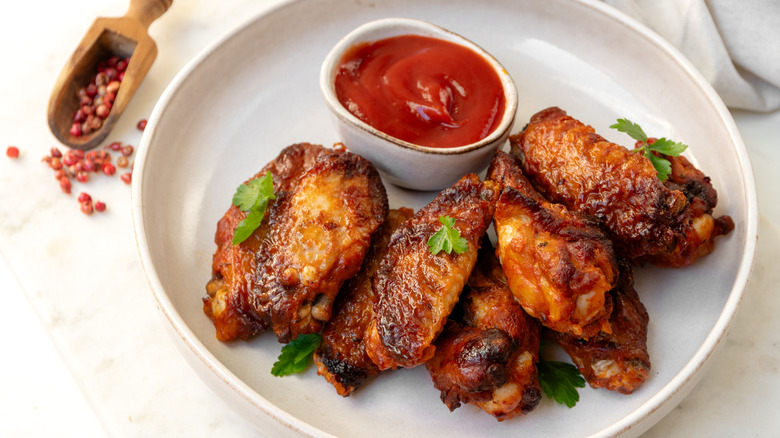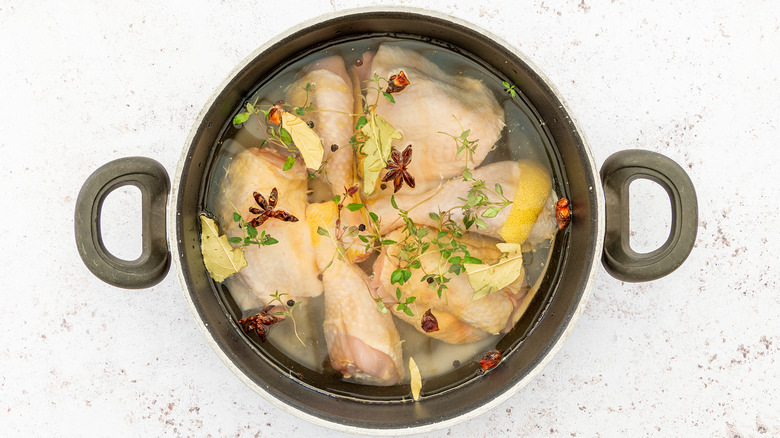Why You Need To Start Brining Your Chicken Wings
Chicken wings are the perfect party food: They're as suited for a dinner bash as they are for a tailgate, and are also perfect conduits for any flavor profile you choose. While these bites may seem simple to cook, mastering certain techniques can elevate your humble dish into the stratosphere. According to Frankie Gaw, food media personality and creator of the Little Fat Boy cooking site, one excellent method is brining your wings before cooking them.
Gaw told Food Republic that "dry brining [wings] with equal amounts kosher salt and baking powder a few hours beforehand and up to overnight really adds so much flavor and texture." He adds that "The baking powder vastly improves the texture of the wing when fried or roasted." This is because the alkaline ingredient promotes browning and crisping of the chicken skin, for the perfect blistered crust.
Those looking to fry their chicken wings can also consider a flavorful wet brine, which is easy to make if you follow Gaw's advice. "I'll usually make a scallion ginger wet brine where I blend water with fresh scallions, ginger, vinegar, a generous amount of salt, and a little bit of sugar," he says. He soaks the chicken in the brine for a few hours and up to overnight. Whether you're dry or wet brining, time is key to getting the most out of it. The longer the brine sits with the chicken, the more the flavors will sink into the meat.
How to choose between dry or wet brining
Those unfamiliar with the brining process may be asking why it's such an effective technique. Frankie Gaw put it best, saying that a brine "seasons the chicken from the inside out while also tenderizing the meat." If you're wondering about the pros and cons of the wet and dry methods, here are some aspects to consider.
A dry brine is probably the way to go if you're roasting crispy chicken wings (or looking for the perfect crust on your pork chops). Dry brines use salt to naturally extract the meat's moisture, which is then reabsorbed. This not only tenderizes the meat and makes it juicy, but infuses it with the flavor of the salt and spices. This effect can also be achieved with a wet brine, but the wet method is much more time-intensive, requiring the meat to sit and dry out to get rid of excess moisture before cooking. This is one of the reasons why Ina Garten prefers a dry brine to a wet brine when making turkey.
That being said, wet brining is great for deep frying wings, as you don't have to worry about the skin being soggy after sitting in liquid — the super hot oil ensures even crisping. The moisture absorbed throughout the brining process creates the juiciest fried chicken, and keeps it from drying out during frying. A good ratio to keep in mind for this process is 2 to 4 tablespoons of salt for every liter of water, in addition to your other flavorings. For more of Gaw's cooking tips, check out his "Saviorng Singapore" content series in partnership with the Singapore Tourism Board and Klook.


